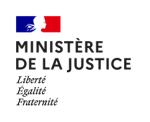Telephone and remote interpreting services
Remote interpreting for online events, video conferences and phone calls
Are you searching for a language solution for online meetings, conferences and events with international guests?
SMG’s simultaneous and consecutive interpreting service is also available remotely and via telephone in over 160 languages!
Thanks to our pool of professional interpreters, we enable our clients to communicate via videoconference or telephone with one or more foreign contacts, benefiting from immediate and accurate translation.
Remote interpreting is an innovative solution with the following benefits:
- Reduces distances with foreign contacts.
- Facilitates the planning of business trips and meetings abroad.
- Rapid response to unforeseen events and in the event of urgency or logistical difficulties.
What platforms do we work with?
Depending on client preference, we can manage telephone interpreting on all the main web conferencing and online meeting platforms such as Zoom, Microsoft Teams, Google Meet, GoToWebinar and Webex.
Alternatively, we can provide our own platform, managing the entire online conference for you, from planning the event, inviting and registering participants, to moderation and, of course, the interpreting service.
Special types of remote and telephone interpreting
-
Dedicated remote interpreter for foreign travel
Booking for the assistance of one of our professional interpreters before setting off on a business trip, conference or trade fair abroad, you will receive language assistance directly on your computer, smartphone or tablet, saving on travel expenses for an on-site resource and benefiting from a professional service in over 160 languages.
-
On-demand solution for hospitals and public administration
Our cultural mediation and remote interpreting services enable efficient management of communication with foreign speakers, an activity that often requires flexibility and on-demand and urgent management. Our interpreters and cultural mediators assist hospitals and public offices with real-time translation and linguistic support also in rare languages such as Hindi, Urdu, Swahili, Chinese, Arabic and many others.
-
Telephone interpreting to support the sales department
In addition, we also provide telemarketing and telesales services in foreign languages to present your products to potential international customers and help you expand your business abroad. We can directly support your staff on site or via video conference, or carry out the service ourselves, providing a final report on the results obtained.
Get a
Free quote
Fill in the form below to get a quote from our offices. We are happy to respond to your request and will get back to you as quickly as possible.
We have provided online and telephone interpreting services for









How we organise a video conference interpreting service with no surprises
When a client requires a remote simultaneous interpreting (RSI) service, it is essential to guarantee not only language quality, but also the technical reliability of the entire system.
To this end, our operational and technical team actively assists both the interpreters and the client at all stages, with the aim of ensuring the proper functioning of the platform, preventing technical problems, and facilitating the full success of the event.
Preliminary tests
- We ask the client to provide the contact details of their technician, so that we can carry out function tests and have a direct contact in the event of faults before or during the service. If the customer does not have a technician, we can provide one of our experts to manage the chosen remote interpreting platform.
- We check the quality of the event venue’s Internet connection to ensure a smooth and accessible service for the audience. In general, a stable connection with at least 500 Kbps upload speed for each interpreter is required.
- We set up the audio channels on which the online simultaneous interpreting will take place, taking into account the limitations of the platform used (maximum number of languages, speaking procedures, audience management, etc.).
Checks of linguistic and technical quality
- We ensure that the work environment of our native speaker remote interpreters is quiet, interference-free and suitable for high-quality voice transmission.
- For simultaneous interpreting services exceeding 60 minutes, we provide two interpreters, organising balanced shifts to ensure vocal health and quality of linguistic output.
- We perform a function test at least 1-2 days before the event, simulating the reception of the audio signal by the interpreters and transmission to the final audience.
Final checks before and during the event
- We repeat the function test on the day of the event, approximately 1-2 hours before the official start.
- We check that all participants have the necessary devices and technical conditions to access the conference without hitches.
- Finally, during the course of the event, we offer real-time technical support, ready to take prompt action in the event of unforeseen events.
Our videoconferencing system
For the technical management of your online conferences, we provide a professional web meeting and multilingual online interpreting system with the following technical features:
- Audio and video quality in high resolution.
- Easy use from any fixed or mobile device: PC, laptop, tablet, smartphone, room videoconferencing system and other compatible audio-conferencing devices.
- ISO/IEC 27001 and SSAE-16 certified system that ensures information security and secure content sharing via a safe and reliable network.
- Capacity for video conferences of up to 500 participants (limit can be increased on customer request).
- Option of holding several videoconferences simultaneously.
- 24-hour availability.
Compliance with applicable technical directives
The system complies with the technical specifications contained in the Guide on Videoconferencing in Cross-Border Proceedings, drawn up by the Secretary General of the European Council and defining the organisational, technical and legal aspects of the use of videoconferencing technology in institutionally sensitive proceedings. This compliance ensures that communications using this technology meet the criteria for security, privacy and efficiency defined by the European Council.
The history of remote interpreting
The rise of simultaneous remote interpreting in the wake of the COVID-19 pandemic
Simultaneous interpreting is an effective form of oral translation for business meetings and corporate events that allows multiple partners from different countries to be involved without having to find a common lingua franca. Simultaneous interpreting in fact guarantees the immediate translation of speech thanks to the presence of a team of professional interpreters working inside a soundproof booth. The booth is equipped with a microphone base and control unit, which sends the acoustic signal to the receivers distributed to the audience, through which they listen to the translation.
However, the restrictions imposed during the COVID-19 pandemic caused a setback in simultaneous interpreting services. Social distancing rules and the ban on any form of gathering inevitably excluded all possibility of group audiences and teams of interpreters, who are usually arranged in pairs in the booth by language combination. However, it turns out that this is not an obstacle to simultaneous interpreting services. Thanks to agile working, it is possible to organise business and company meetings remotely.
How the professional remote interpreting service worked during the pandemic
Remote simultaneous interpreting is in fact a formula driven precisely by the need to restore the contact that the COVID-19 pandemic had disrupted. During the pandemic, we saw the first widespread use of remote simultaneous interpreting to support business meetings on platforms such as Skype, Zoom or Google Meet.
There are several ways to perform simultaneous interpreting remotely. To fully understand them, we must start from the assumption that, to guarantee such a service, you need to have two or more parallel audio channels. An input channel, on which the interpreter receives the speech in the original language, and a second output channel (or channels), on which the interpreter transmits the translation. Unfortunately, in online conferences there is generally only one channel, which consists of what is known as a ‘virtual room’ for all the guests.
Listeners/speakers and interpreters were all invited to participate in the meeting in the same virtual room. Having the listeners/speakers and interpreters all on the same audio channel, however, led to the unfortunate situation where the interpreter’s voice covered the speaker’s or vice versa. Nevertheless, interpreters managed to carry out simultaneous translation by overcoming the limitation of the single audio channel using often imaginative and not very effective technical methods. For example, there was the idea of using a computer connected to the videoconference, and thus to the audience receiving the translation, and a mobile phone, so that the interpreter could listen to the speaker through the mobile phone and translate into the microphone connected to the computer. This solution, however, does not allow the language reversal of the speech channel, so the interpreter could only provide output in one language, that of the audience.
Today, the technology has evolved and, as we have seen above, is now widely used and increasingly effective and functional.
Advantages and disadvantages of Zoom Webinars
In view of the great demand for interpreting services through Zoom Webinars, we share some thoughts on this platform below. Despite the fact that in professional spheres, other solutions such as Microsoft Teams or specific platforms that guarantee high performance and strict security protocols are preferred, Zoom is nevertheless widely used in the commercial and private sector.
Remote interpreting via the Zoom platform requires monthly or annual subscription for access to Zoom Webinars. With this version, you can organise virtual meetings with a capacity of up to 500 participants. The webinar organiser can directly select who can speak, who can share the screen and, finally, who can translate the words of the speaker. Zoom Webinars can also create a priori a parallel channel to the meeting to which only the interpreters will have access for translating what the speakers say.
How it works
To date, Zoom Webinars is an efficient support for remote simultaneous interpreting. Interpreters can use the same virtual platform to listen to the audio of the meeting in their earphones and simultaneously translate for the audience through the microphone. The translation can be delivered in both languages of the language combination of the interpreter, who can change the audio channel independently depending on the language required. Similarly, the audience can decide which language to listen to, depending on which speaker takes the floor, simply by using the interpretation button in the settings bar. Zoom Webinars is a fully digital, user friendly platform that can be used on any device, from computer to mobile phone. Simply download the application, register and, depending on your pricing plan, decide whether to create a meeting or a webinar.
Limits of the platform
The remote simultaneous interpreting option offered by Zoom is only effective in two situations:
- If all speakers speak in the same language;
- If the event takes place in only two languages.
Let us give some examples. In the first case, when the language of the speakers is the same, the translation can be delivered in all the required languages because all the interpreters will always start from that one language. In the second case, when the meeting takes place between speakers of two different languages, the interpreters can decide independently which language to translate into, depending on who is speaking. In all other cases, however, this version of remote simultaneous interpreting is not ideal. Indeed, in meetings where there are more than three languages in the speaker panel, there is no solution for ‘relay interpreting’, i.e. interpreting from one language to another through a third ‘pivot’ language.

